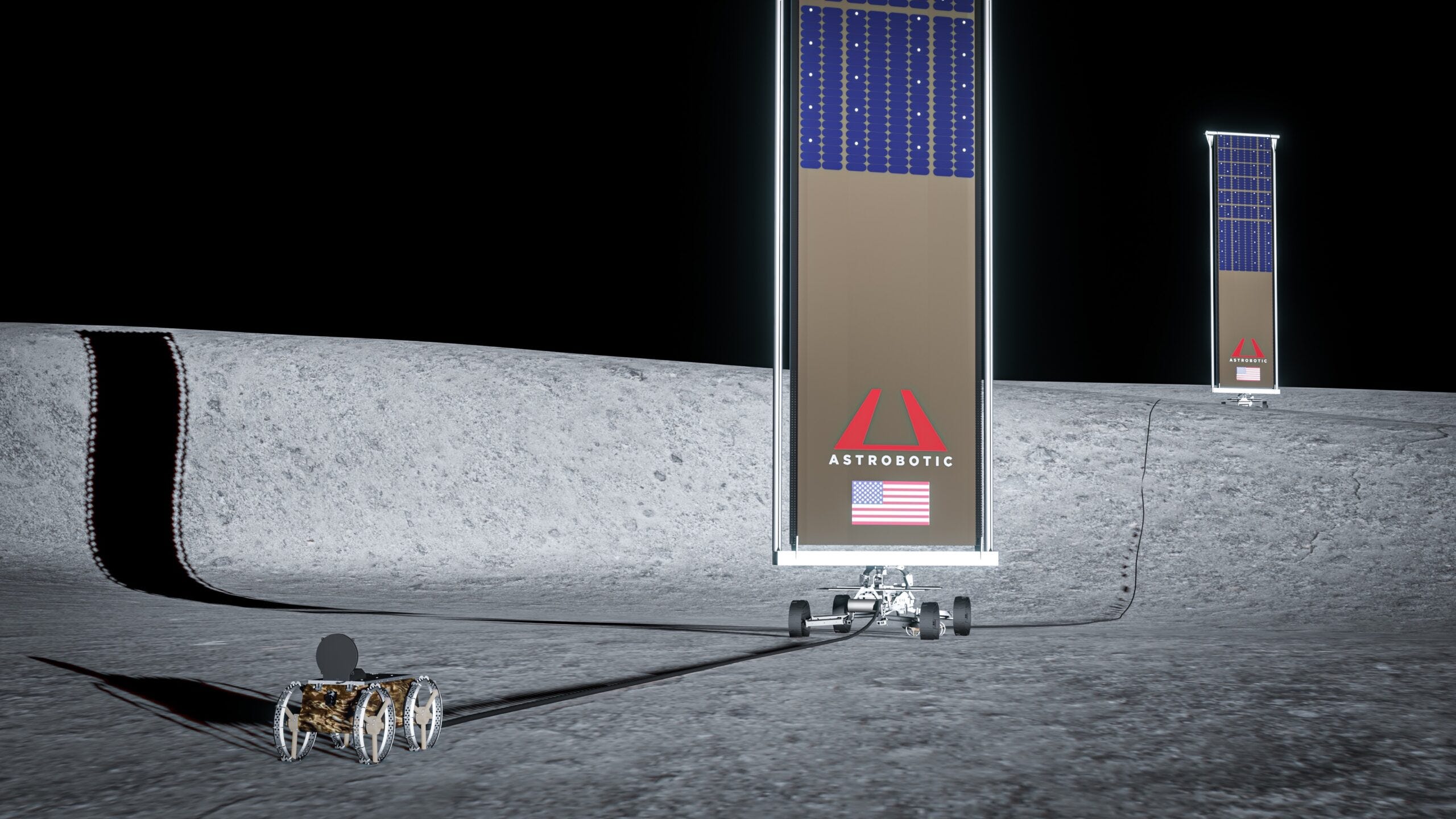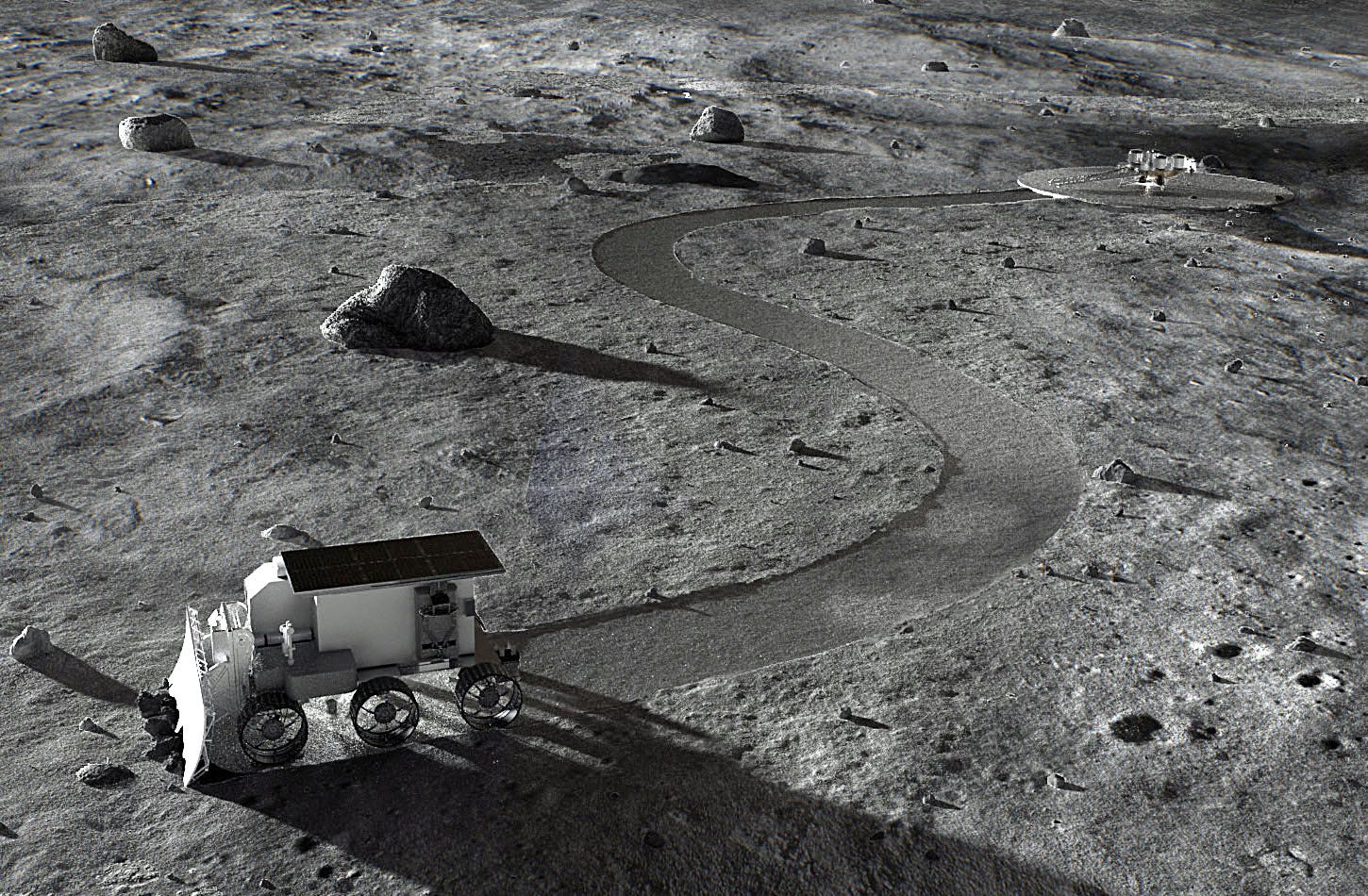Moon Monday #138: Towards technologies for long-term lunar exploration and living
My friends at The Orbital Index, a kind Moon Monday sponsor, have added the ability for readers to directly support their newsletter. It’s honestly one of the most crisp, versatile, and technical space weeklies out there so I encourage you to donate for said work to thrive. 🚀
NASA invests in more future lunar technologies
As part of the public-private Tipping Point contracts, NASA is funding eight advanced lunar exploration technologies on a milestone basis for up to four years, each of which contribute towards sustained exploration of our Moon as well as long-term lunar living. Four of these projects, discussed below, get north of $10 million each.

Astrobotic’s build up to a lunar power grid
Astrobotic is being awarded $34.6 million to demonstrate power transmission on the Moon. After a lunar landing targeting 2026, the company’s tethered, autonomy-capable CubeRover—itself supported by a $5.8 million Tipping Point contract—will unreel more than a kilometer of high-voltage, 1 kilowatt power line across the surface. The demonstration will be a test for LunaGrid, wherein Astrobotic aims to deliver commercial power by end of decade to enable hardware on the Moon’s poles to survive the poorly lit terrain and frigid nights. Quite cleverly, LunaGrid combines virtually everything Astrobotic has been tangibly building so far: landers, rovers, wireless chargers, and their also NASA-funded 20-meter tall, retractable polar solar arrays to be deployed on maximally sunlit sites.
Blue Origin’s tech alchemist
Blue Origin will receive $34.7 million to advance its ‘Blue Alchemist’ solar cells—made using silicon, iron, and aluminum extracted from a lunar soil simulant—by demonstrating their autonomous operation in a “simulated lunar environment” by 2026. While undeniably intriguing, the sheer complexity and scale of producing infrastructure on the Moon to power habitats means that at least for a decade from now, NASA’s plans for getting power—solar and nuclear—for surface activities continues to be through the annoying tradition of pulling material out of Earth’s gruesome gravitational well.
Nuclear electrical power on the Moon
NASA will award $15 million for Project Harmonia, a team led by Zeno Power which includes CLPS vendors Blue Origin and Intuitive Machines, to demonstrate nuclear electrical power on the Moon in 2027. Specifically, Jeff Foust reports that the team aims to demonstrate a radioisotope generator using a Stirling engine instead of traditional thermocouples to convert radioactive heat into electrical power. The system will use the Americium-241 isotope, which is more readily available than the conventionally used Plutonium-238.
Redwire’s Moon-made infrastructure
Redwire, leading a team which includes CLPS vendors Astrobotic and Lockheed Martin, is being awarded $12.9 million to develop microwave heating technologies to solidify lunar soil for building infrastructure such as roads, foundations for habitats, and landing pads. The funding doesn’t seem to include a lunar surface demonstration.

Living on and around the Moon
While having astronauts live long-term on and around our Moon is still a while away, the trickle of related developments continue. Here are all such updates from last week:
- NASA’s decision to launch the upcoming US-led Gateway international lunar orbital station’s habitable module mated to its power & propulsion one has led to some mass constraints, which combined with evolving Gateway requirements from NASA have resulted in contractor Northrop Grumman taking a $36 million hit in building the habitable module, Jeff Foust reports.
- The Japan Times reports that Toyota’s upcoming autonomous crewed pressurized rover, co-built with JAXA, will host NASA Artemis astronauts on the Moon for up to 42 Earth days at a time. The rover will use solar energy and water to produce hydrogen and oxygen through electrolysis during the day, and fuel cells for electricity at night. The rover is being designed to work on the Moon for at least 10 years. We know from JAXA’s presentation at the LEAG 2022 Annual Meeting that the rover can even enter small permanently shadowed regions if traverse routes involve slopes less than 20 degrees. NASA is expected to but hasn’t yet confirmed the rover’s inclusion in the Artemis Basecamp plan.
- In June 2022, the Italian Space Agency (ASI) and NASA signed an agreement to conduct a preliminary design study of an Artemis Basecamp surface habitation module. On July 26, ASI announced an agreement with Politecnico di Milano to advance work on the ORACLE project aimed at extracting oxygen from lunar soil on a Moon mission by 2028.
- ESA is funding research on how to prevent microbial growth inside future lunar spacesuits, and decided to title their blog post explaining the same as “Keeping your underwear clean on the Moon”.

Many thanks to Epsilon3 for sponsoring this week’s Moon Monday.
More Moon
- India’s Chandrayaan 3 Mooncraft performed a final Earthbound orbit raising burn on July 25, which achieved the desired parameters of 236 by 127,603 kilometers. The ~30-minute engine burn to push Chandrayaan 3 towards the Moon will be on August 1.
- On July 27, Argentina became the 28th country and the fifth Latin American nation to sign the US-led Artemis Accords. The other Latin American signatories are Mexico, Brazil, Colombia, and Ecuador. Interestingly, Argentina, Mexico, and Ecuador are members of the recently formed “Latin American and Caribbean Space Agency”, or ALCE. Inspired in part by the model of the European Space Agency, ALCE aims to pool resources of Latin American nations to better their space activities and their impacts up there and on the ground.
Although there are significant differences between the visions for lunar governance advanced by the Artemis partners and at COPUOS, neither grouping is focused on protecting scientific opportunity on the Moon. The Artemis Accords serve the needs of the US Artemis programme, first and foremost a human lunar exploration programme, though one with some scientific objectives. Scientific interests go almost entirely unaddressed in the text of the Accords. COPUOS, meanwhile, remains heavily focused on overcoming a long-standing schism between developed and developing countries over how to share the material benefits of space activities, including resource exploitation. It has devoted scant attention to the global public interest in protecting science on and from celestial bodies.
– Time to protect scientific opportunity on the Moon / Alanna Krolikowski
